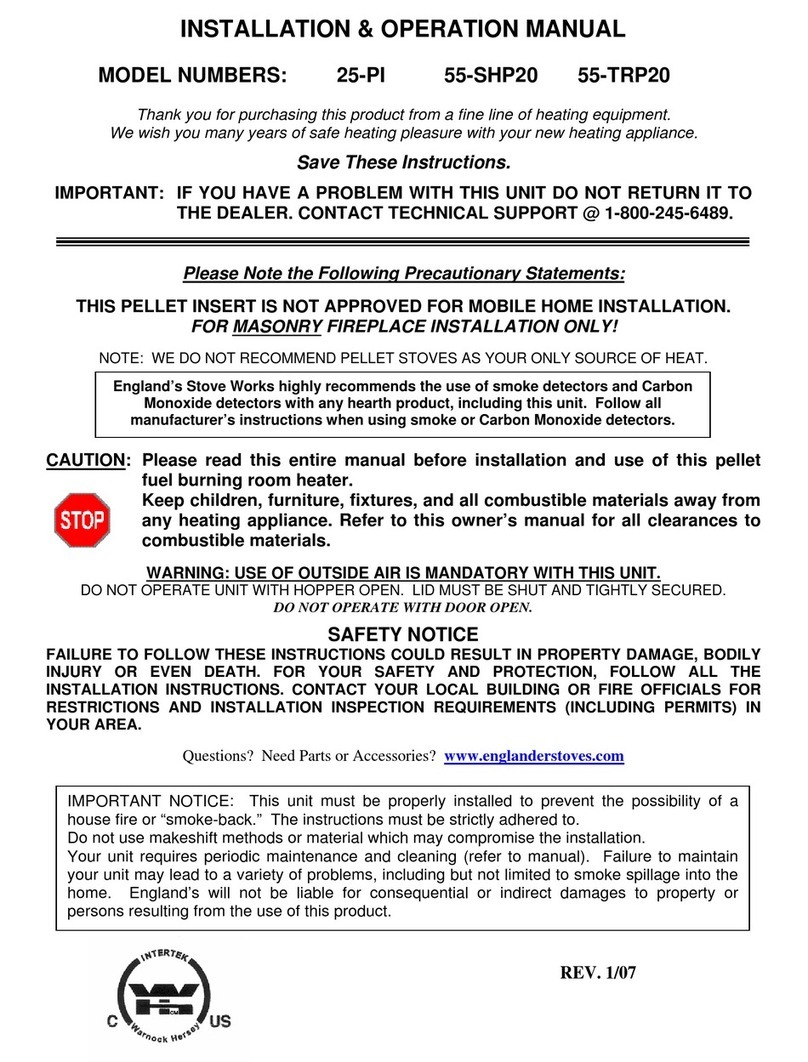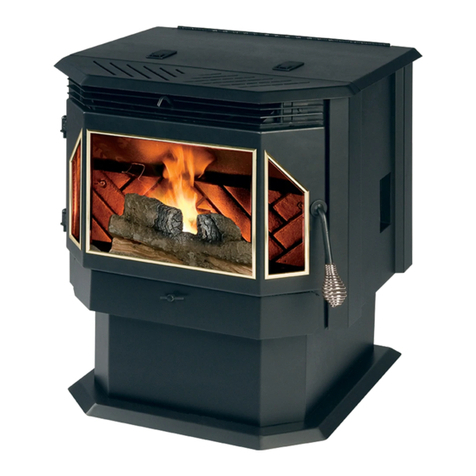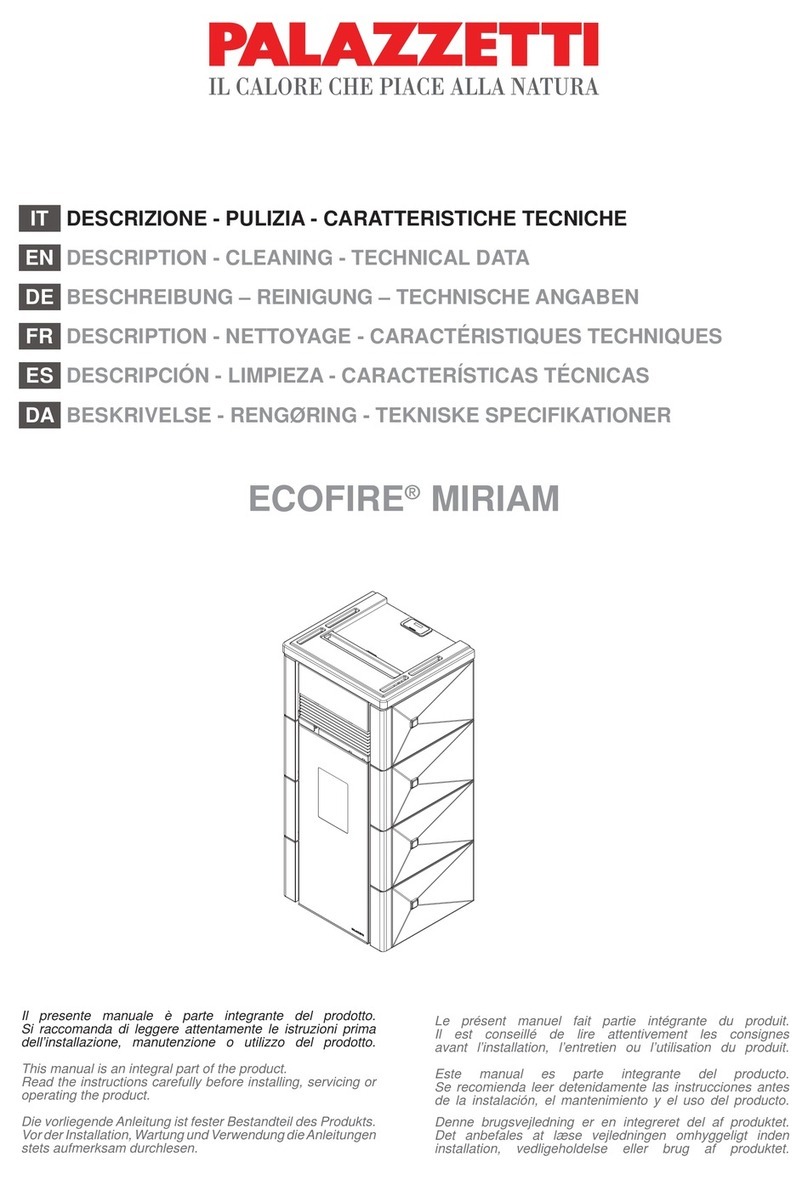
3
IMPORTANT! READ AND FOLLOW ALL INSTALLATION AND MAINTENANCE INSTRUCTIONS, INCLUDING CLEANING THE
UNIT AS SPECIFIED, AND REPLACING GASKETS ANNUALLY, AND PARTS AS NEEDED.
ENGLAND’S STOVE WORKS IS NOT RESPONSIBLE FOR ANY DAMAGE OR INJURY INCURRED DUE TO NEGLECT, OR DUE TO
UNSAFE INSTALLATION OR USAGE OF THIS PRODUCT. CALL TECHNICAL SUPPORT WITH ANY QUESTIONS.
TABLE OF CONTENTS
Introduction
Introduction..................................... 4
Specifications
Heating Specifications ...................... 5
Dimensions ...................................... 5
EPA Compliance ............................... 5
Installation
Installation Overview ....................... 6
Clearances to Combustibles ............. 7
Venting Introduction........................ 8
Venting Guidelines ........................... 8
Additional Venting Information........ 9
Approved Venting Methods
Through the Wall............... 10
Through the Ceiling............ 11
Existing Chimney ............... 12
Mobile Home Installation............... 13
Vent Termination Clearances ......... 14
Outside Air Hookup........................ 15
Floor Protection ............................. 16
Daily Operation
Getting Started............................... 17
Lighting a Fire............................ 17-18
Control Board Settings ................... 19
Error Codes .................................... 20
Power Failure................................. 21
Thermostat Installation .................. 22
Thermostat Operation............... 22-23
Optional Accessories...................... 23
Maintenance
Daily
Important Notes................ 24
Daily Ash Removal ........ 24-25
Cleaning the Burn Pot ........ 25
Bi-weekly
Baffle Removal .................. 26
Monthly
Important Notes........... 26-27
Exhaust Chamber.......... 27-28
Venting Pipe ...................... 28
Yearly
Important Notes.................29
Exhaust Blower ..................30
Convection Blower.............30
Cradle Removal..................31
Hopper Fines......................31
Checking Gaskets ...............31
Troubleshooting Guide
Troubleshooting ........................32-33
Replacing Components
Auger Motor...................................34
Convection Blower..........................35
Combustion Blower ........................35
Vacuum Switch...............................36
Igniter.............................................36
Gaskets...........................................37
Glass...............................................38
Control Board. ................................39
Wiring Diagram...............................40
Hopper Lid Latches .........................41
Door Latch......................................42
Magnets .........................................42
Hopper Lid......................................42
Fiberboard......................................43
Panels.............................................43
Finish..............................................43
Illustrated Parts Detail
Exploded Parts Diagram..................44
Parts List....................................45-46
Other Details
Ash Pan Latches............................46
Warranty
Serial Tag Sample............................47
Warranty Details........................48-49
Important Notice............................50
Warranty Reg. Form .......................51
Retain for you files
Model Number________________________
Date of Purchase_______________________
Date of Manufacture____________________
Serial Number_________________________
* This information can be found on the safety tag attached to the underside of the hopper
lid. Have this information on hand if the phone the factory or your dealer regarding this
product.






































